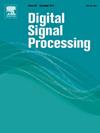A survey on Deep Image Prior for image denoising
IF 2.9
3区 工程技术
Q2 ENGINEERING, ELECTRICAL & ELECTRONIC
引用次数: 0
Abstract
Deep Image Prior (DIP) has gained attention as a promising approach that bridges traditional hand-crafted priors and deep learning-based models. By utilizing a convolutional neural network (CNN) structure with "zero sample" training, DIP effectively learns the priors of degraded images, primarily for image reconstruction. Despite its potential, there is a lack of comprehensive reviews summarizing the various DIP-based image denoising methods. This paper aims to fill this gap by providing an overview of DIP-based image denoising approaches by reviewing recent papers on the topic. We classify these methods into four groups based on their enhancement strategies: theoretical investigations, network structure, network input, and loss function. The review evaluates the strengths and weaknesses of DIP-based methods, compares state-of-the-art variants, and analyzes the impact of various improvements on denoising performance. Additionally, we identify the challenges in applying DIP to image denoising and suggest directions for future research. This review provides valuable insights into the potential of DIP in image processing, especially for those new to unsupervised deep learning models.
求助全文
约1分钟内获得全文
求助全文
来源期刊

Digital Signal Processing
工程技术-工程:电子与电气
CiteScore
5.30
自引率
17.20%
发文量
435
审稿时长
66 days
期刊介绍:
Digital Signal Processing: A Review Journal is one of the oldest and most established journals in the field of signal processing yet it aims to be the most innovative. The Journal invites top quality research articles at the frontiers of research in all aspects of signal processing. Our objective is to provide a platform for the publication of ground-breaking research in signal processing with both academic and industrial appeal.
The journal has a special emphasis on statistical signal processing methodology such as Bayesian signal processing, and encourages articles on emerging applications of signal processing such as:
• big data• machine learning• internet of things• information security• systems biology and computational biology,• financial time series analysis,• autonomous vehicles,• quantum computing,• neuromorphic engineering,• human-computer interaction and intelligent user interfaces,• environmental signal processing,• geophysical signal processing including seismic signal processing,• chemioinformatics and bioinformatics,• audio, visual and performance arts,• disaster management and prevention,• renewable energy,
 求助内容:
求助内容: 应助结果提醒方式:
应助结果提醒方式:


